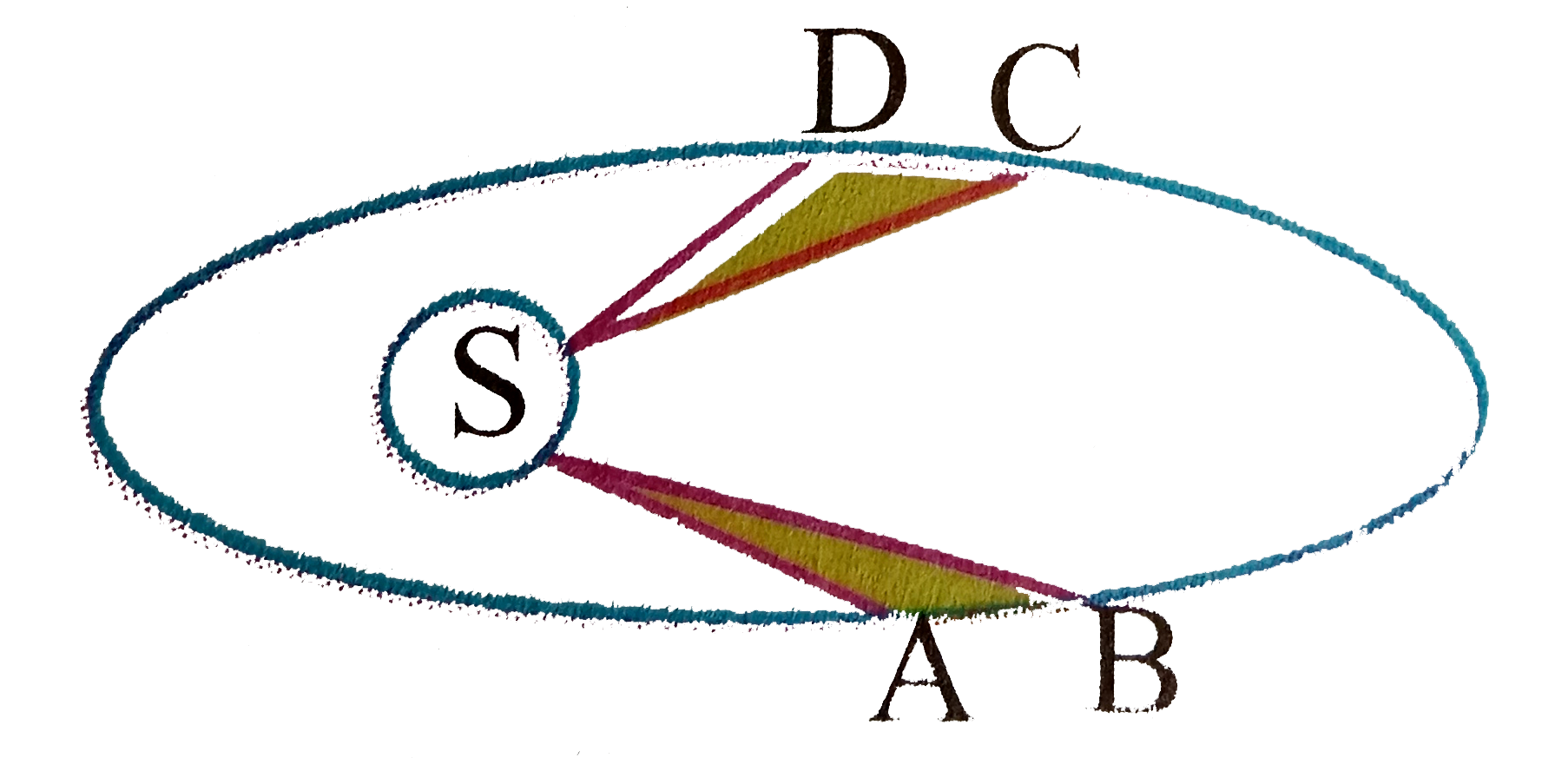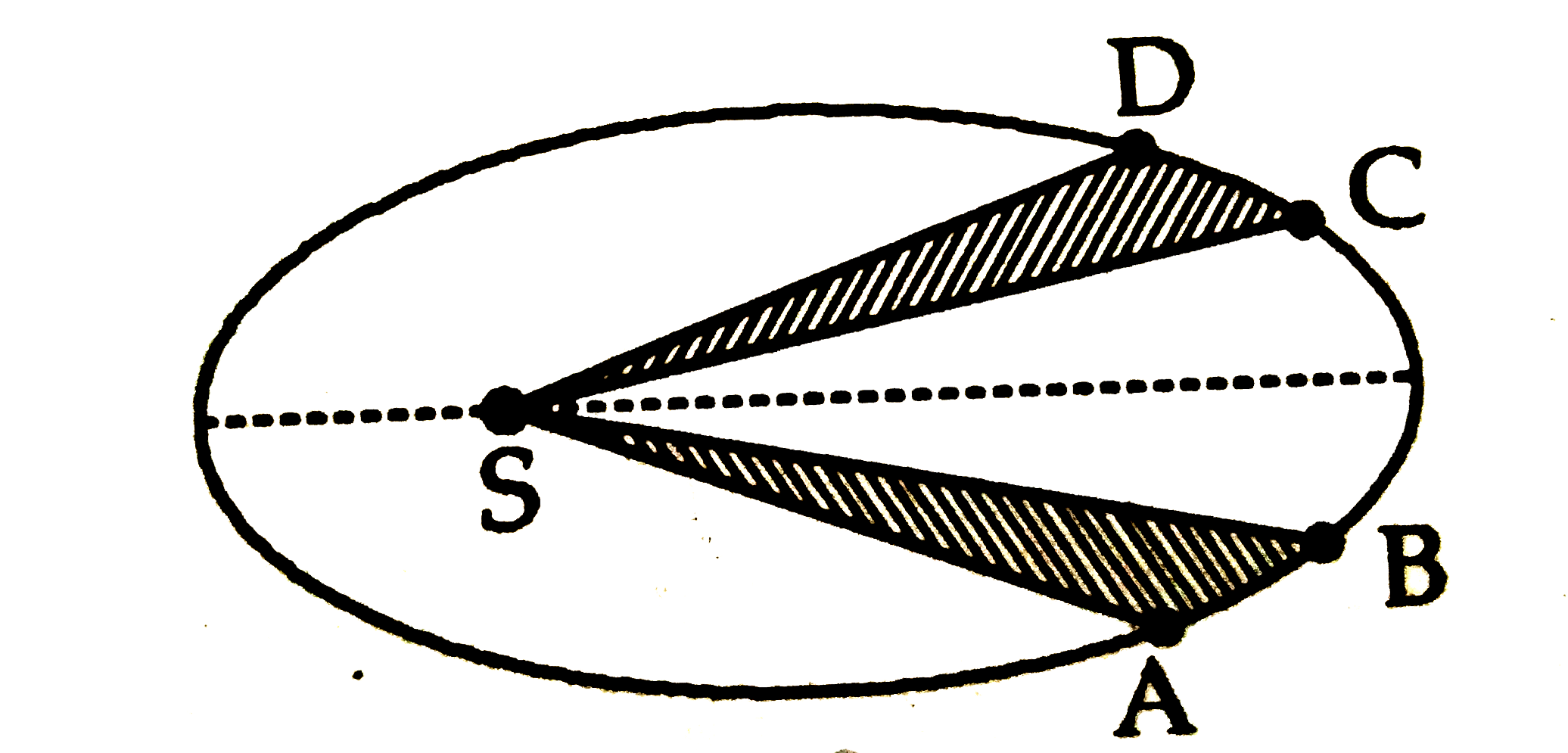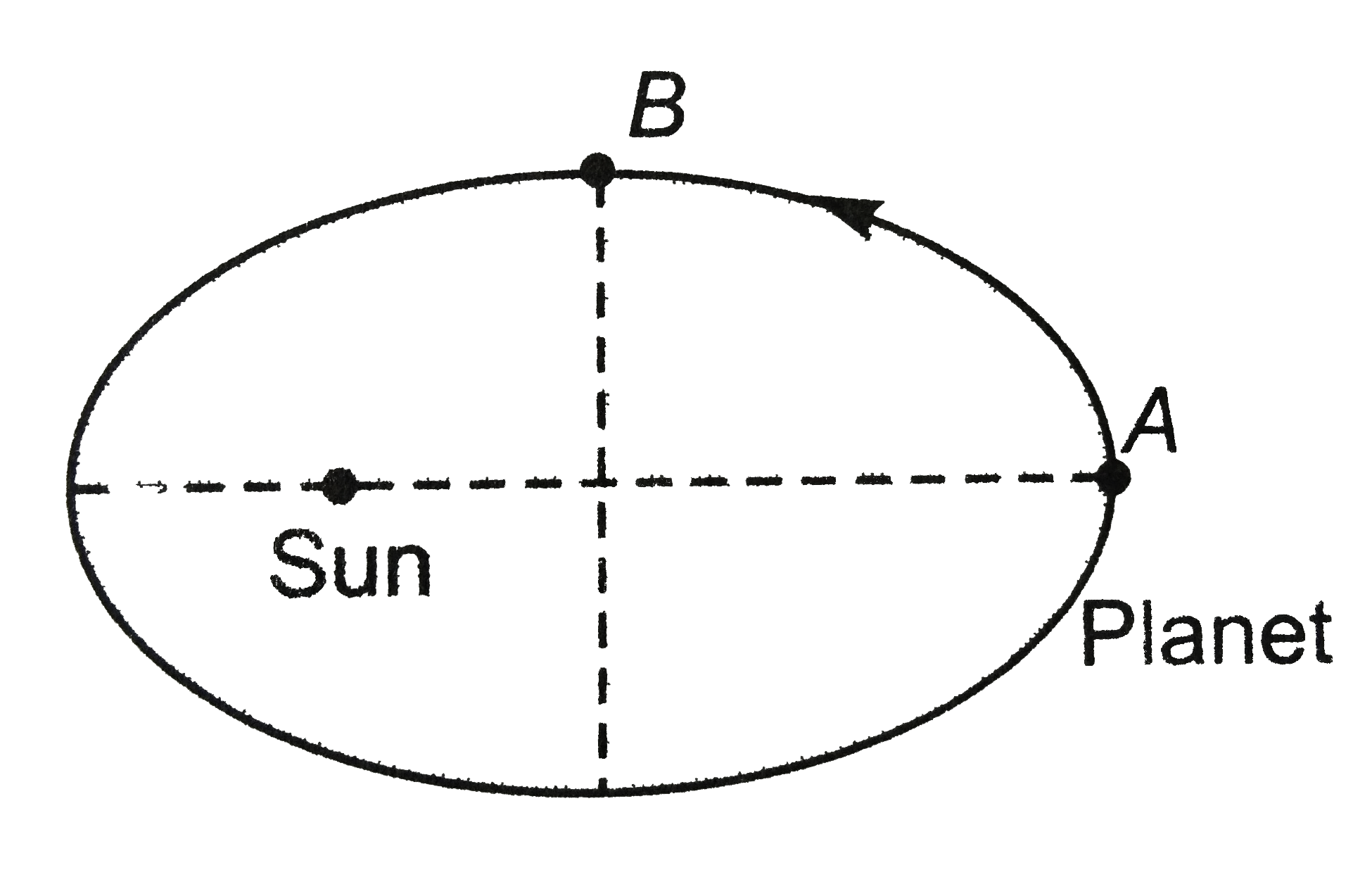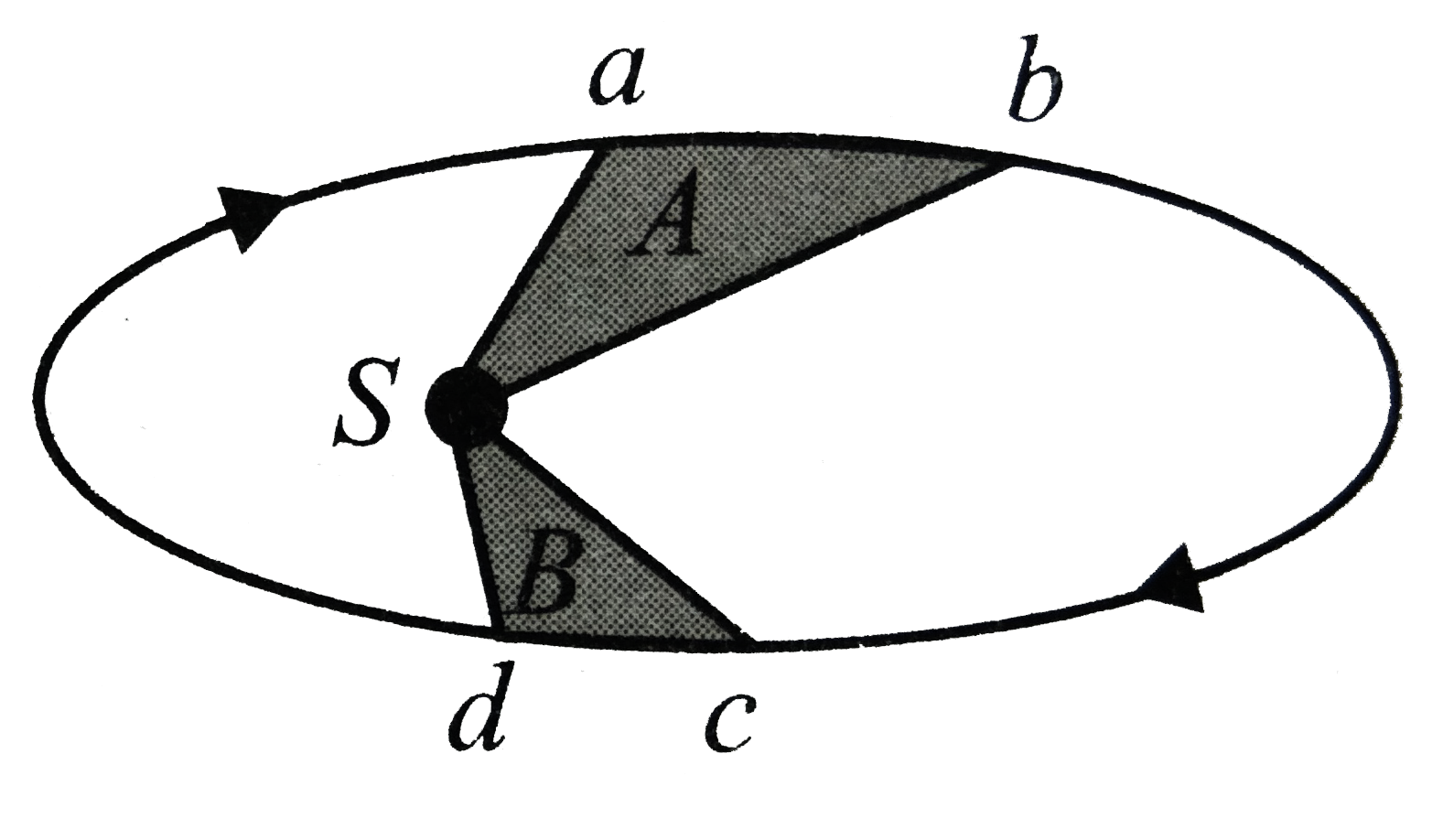The motion of a planet around sun in an elliptical orbit is shown in the following figure. Sun is situated at one focus. The shaded areas are equal. If the planet takes time and in moving from to and from to respectively, then

none of these
The correct Answer is:C
Step by step video, text & image solution for The motion of a planet around sun in an elliptical orbit is shown in the following figure. Sun is situated at one focus. The shaded areas are equal. If the planet takes time t_1 and l_2 in moving from A to B and from C to D respectively, then by Physics experts to help you in doubts & scoring excellent marks in Class 12 exams.
Updated on:21/07/2023Topper's Solved these Questions
- GRAVITATIONBOOK - FIITJEECHAPTER - GRAVITATIONEXERCISE - Assertion & Reasoning type
1 Videos
- GRAVITATIONBOOK - FIITJEECHAPTER - GRAVITATIONEXERCISE - Numerical based Questions
4 Videos
- GRAVITATIONBOOK - FIITJEECHAPTER - GRAVITATIONEXERCISE - Solved problem (Objective)
15 Videos
- GMP ASSESMENTBOOK - FIITJEECHAPTER - GMP ASSESMENTEXERCISE - Numerical Based
61 Videos
- HEAT AND TEMPERATUREBOOK - FIITJEECHAPTER - HEAT AND TEMPERATUREEXERCISE - NUMERICAL BASES QUESTIONS
1 Videos
Similar Questions
The figure shows the motion of a planet around the sun in an elliptical orbit with the sun at one focus. The shaded area SAB is twice that of SCD. If t1andt2 are the times taken by the planet to move from A to B and C to D respectively, then

View SolutionFigure shows the elipticla path of a planet about the sun. The two shaded parts have equal area. If t1andt2 be the tim taken by the planet to go from a to b and from c to d respectively
View Solution
Knowledge Check
A planet revolves around the sun in an elliptical orbit with the sun at one focus as shown in the figure. The shaded areas are equal. If t1andt2 are the times taken by the planet to move from a to b and from c to d, respectively, then ………….. .
At1>t2Bt1=t2Ct1<t2Dt1=2t2For a planet moving around the sun in an elliptical orbit, which of the following quantities remain constant ?
AThe total energy of the sun plus planet systemBThe angular momentum of the planet about the sunCThe force of attraction between the twoDThe linear momentum of the planetA planet is revolving around the sun in an elliptical orbit. Which out of the following remains constant.
(a) Linear speed (b) angular momentum
( c) kinetic energy (d) potential energy (e) total energy throughout its orbit.Athe total energy of the sun plus planet systemBthe angular momentum of the planet about the sunCthe force of attraction between the twoDthe linear momentum of the planet
A plantet is moving round the sun in an elliptical orbit as shows. As the planet moves from a to B

View SolutionFigure shows the motion of a planet around the Sun S in an elliptical orbit with the Sun at the focus. The shaded areas A and B are also shown in the figure which can be assumed to be equal. If t1 and t2 represent the time taken for the planet to move from a to b and c to d, respectively then

View SolutionA planet moves around the sun in an elliptical orbit with the sun at one of its foci. The physical quantity associated with the motion of the planet that remains constant with time is
View SolutionThe areal velocity of a planet of mass m moving in elliptical orbit around the sun with an angular momentum of L units is equal to
View SolutionThe earth E moves in an elliptical orbit with the sun S at one of the foci as shown in figure. Its speed of motion will be maximum at the point

View Solution
